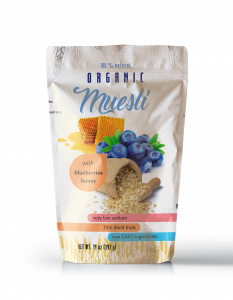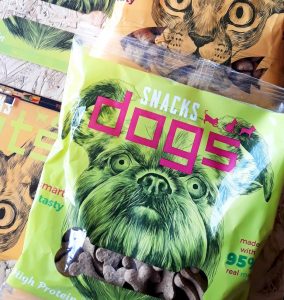Flexible Packaging for the 2020s – The case for inline flexo
Phil Baldwin, Sales Manager at Mark Andy UK, believes the time is right for manufacturers of flexible packaging to consider inline flexo press technology as a viable alternative to CI.
Nick Coombes asks him about the advantages and limitations
NC: What are the advantages of producing flexible packaging on an inline press?
PB: Inline presses offer a far quicker set-up for multi-colour jobs at the beginning of the process, with cheaper plates and mounting tape too. And they also show significantly lower waste at the end of the line. In today’s marketplace that is seeing ever decreasing run lengths on substrates that are either expensive or difficult to source, or both, then inline production is ideal. These presses are also more cost effective for sampling and test marketing on a limited basis, and from an operative point of view, can usually be handled by one person.


NC: Is inline suited better to a particular type of flexible packaging or substrate?
PB: There are certain plastic films that are actually more suited to CI than inline, so it really comes down to the substrates required for each individual job. Where inline scores heavily is that each press can be more easily configured with more additional enhancement processes and functions such as inline sheeting and stacking.
NC: Are there any issues with inline production regarding food safety?
PB: None! This is more a question of the inks, adhesives and lacquers being used than the type of press. There are a variety of drying and curing options available and inline presses can run all ink types. A good example of this is that many lidding products, which have direct food contact, are run off on inline presses. Food safety is not an issue at all and since a high proportion of flexible packaging is consumed by the food industry, there are many opportunities for converters involved in this sector to seriously look at an inline press as their next investment.
NC: Are there any limitations to what an inline press can do in this sector?
PB: Yes, there are a few materials, which owing to their construction and strength require a central drum rather than the web paths associated with inline machines. But these tend to be the older types of film and many of the more modern substrates being developed for ecological reasons are more tolerant, and this will make the case for inline even stronger going forward.
NC: Can you highlight any good examples of Mark Andy presses producing flexible packaging?
PB: There are hundreds of producers worldwide using Mark Andy presses to produce wrap around, IML and shrink sleeves. We also supply the largest aluminium producers in the world with presses for lidding products from yoghurts, cream, and similar dairy produce to butter wraps. In fact, one of the largest European suppliers has several Mark Andy presses running lidding products 24/7 at between 200-300m/min on web widths ranging from 430mm through to 660mm. These presses are fitted with nitrogen UV systems and run food packaging-safe inks.
NC: How does Mark Andy see the flexible packaging market going forward?
PB: There is still and will be well into the future a need for wide web CI presses for items such as dog food bags, garden compost and so on. These runs require machines wider than is possible for inline presses and the run lengths are so great that no inline machine could compete. It’s not only about run length but also the physical size of the final product. So, items such as large sacks will always require wide web presses and due to the nature of the material used it will almost always demand a central impression machine for support of the substrate.
However, as the digital print technology continues to develop and grow, both in terms of web width and production speed, and with consumers demanding more options, then niche or seasonal item production will move more towards mid web machines.
Mark Andy features a wide selection of equipment and supplies to support flexible packaging applications. Find out more here.